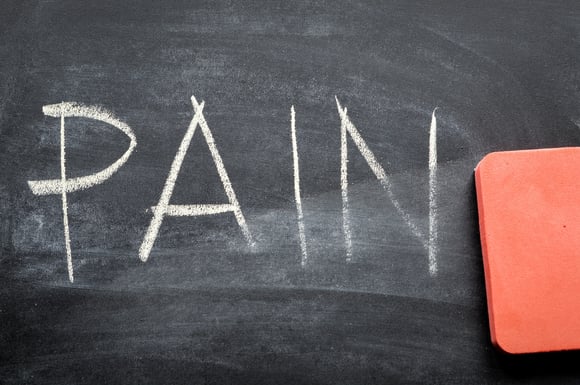Is Pain All in My Head?

Pain is the result of signals sent to and interpreted by your brain. Pain signals can come from many areas of your body, but you do not know you’re in pain until your brain processes and perceives it. Though the perception of pain is generally initiated once there is an injury (which causes pain signals to be sent to the brain), sometimes even after an injury has healed, the brain still perceives the existence of pain.
The way pain signals are processed in the brain is an amazing system with many factors playing a role in how pain works. If pain is a result of a new injury, the body processes the injury to an electrical signal, passing signals to the spinal cord and up to the brain. As the pain signals travel, any number of stops along the way to the brain can be altered to either reduce or increase the pain that is inevitably “felt” or perceived by the brain. The brain can even send signals back to the pain pathway to help stop the pain - or sometimes increase it.
Perceiving Pain
There are many areas in your brain that can help process and perceive pain. You can think of these areas like the command center, working together to tell you how much pain to feel. For example, areas of the brain play a role in pain perception by deciphering such things as where the pain is, how to move away from the pain, interpreting the emotional aspect of pain, the context and situation of the pain (Have I had this pain before? What type of a situation was it? Do I need to be concerned?) and even pain memory or learning of pain. Many areas of the brain all work together to help you realize the feeling of pain.
The brain can truly learn and adapt to what it is exposed to. For example, how many things can your mind identify just by touch, even without seeing them? Most of us can dig around a bag without looking and know what the familiar items are. For instance we know the way our keys feel even without looking at them; our mind identifies keys just by touch. How does it know that? For most of us, it's just something we learned without even really paying attention. The perception of some pain can be like that. Our body and mind can adapt its responses to pain and make pain influencing connections even though we don’t intend or try to.
Psychological Factors
Because your mind is a powerful thing that makes new connections every day, psychological interventions to help reduce pain can be critical. If pain is something you feel even after an injury has healed, or lasts longer than about 3 months (thought of as chronic pain), retraining your brain to change how it interprets pain can be helpful.
With pain we know that the body can transmit information from damaged tissue to the central nervous system, and psychological factors modulate and modify the experience of pain and social factors may moderate psychological influences.
Psychological therapy for pain is aimed at taking pain signals and trying to make your brain perceive them differently to result in less pain. The body is a living, adaptable and responsive system. Using the adaptive and responsive system to our advantage can help in many ways -including pain management. It is possible to learn skills needed in order to change the brain and the way it processes information. The brain’s perception of pain can be modified by the brains interpretation of its meaning, context, expectations and experience.
Pain Resource
Medications can help to decrease pain by working on one or more areas of the pain pathway. However, because chronic pain is a complex weave of psychological, biological, and social factors, for medications to be as effective as possible we need the psychological and social factors to be optimized too.
Beyond medication, there are many pain resources and interventions that help the mind’s ability to affect chronic pain, including cognitive behavioral therapy (CBT), relaxation techniques, guided imagery, mindfulness and acceptance and commitment therapy (ACT).
CBT is one of the most researched behavioral approaches for pain patients. Typical cognitive training for pain management begins with helping patients understand their own cognitive response system. Specifically, people can learn to monitor situational factors that trigger their pain or stress and what they actually experience emotionally, behaviorally and physically when they have pain or stress and then learn skills to help the brain improve the way it interprets pain.
Retraining the brain to combat the pathways that have been made will take time, so give yourself time to assess if something is working. The sooner you start brainstorming ways that will help better manage your pain through retraining the brain, the sooner you may be on the path to improvement.
Some people perceive and handle pain differently than others for a variety of reasons. What works for others may not work for you, but keep an open mind to different approaches and how they may affect your recovery. With a healthcare provider’s assessment, proper training and education, you too can play an active role in managing your own pain.
Other Posts You Might Be Interested In
Subscribe to email updates
Stay up-to-date on what's happening at this blog and get additional content about the benefits of subscribing.


